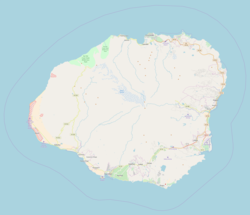Wailua Complex of Heiaus | |
 Pōhaku Hoʻohānau (birthing stone) and Pōhaku Piko (umbilical stone), Holoholokū Heiau | |
| Nearest city | Wailua, Hawaii |
|---|---|
| Coordinates | 22°2′41″N159°20′14″W / 22.04472°N 159.33722°W |
| NRHP reference No. | 66000297 |
| Significant dates | |
| Added to NRHP | October 15, 1966 [1] |
| Designated NHLD | December 29, 1962 [2] |
Wailua River State Park and the Wailua Complex of Heiaus, which it includes, are located on the eastern side of the Hawaiian island of Kauai. The park consists primarily of the Wailua River valley, which is the only navigable river in Hawaii. Visitors to this park can kayak, take riverboat cruises and explore the rainforest. Even motorboats and water skiing are permissible on the river.













